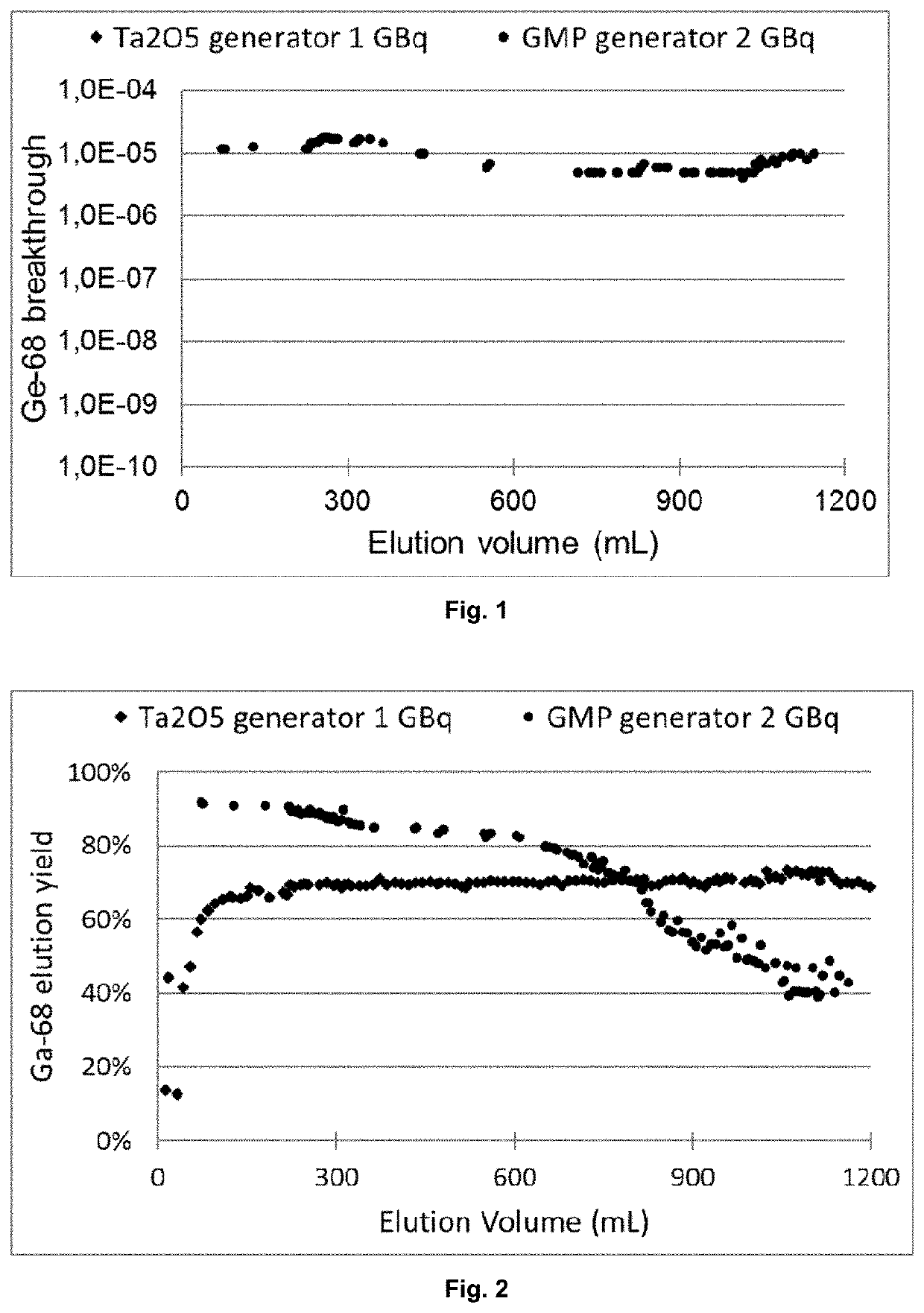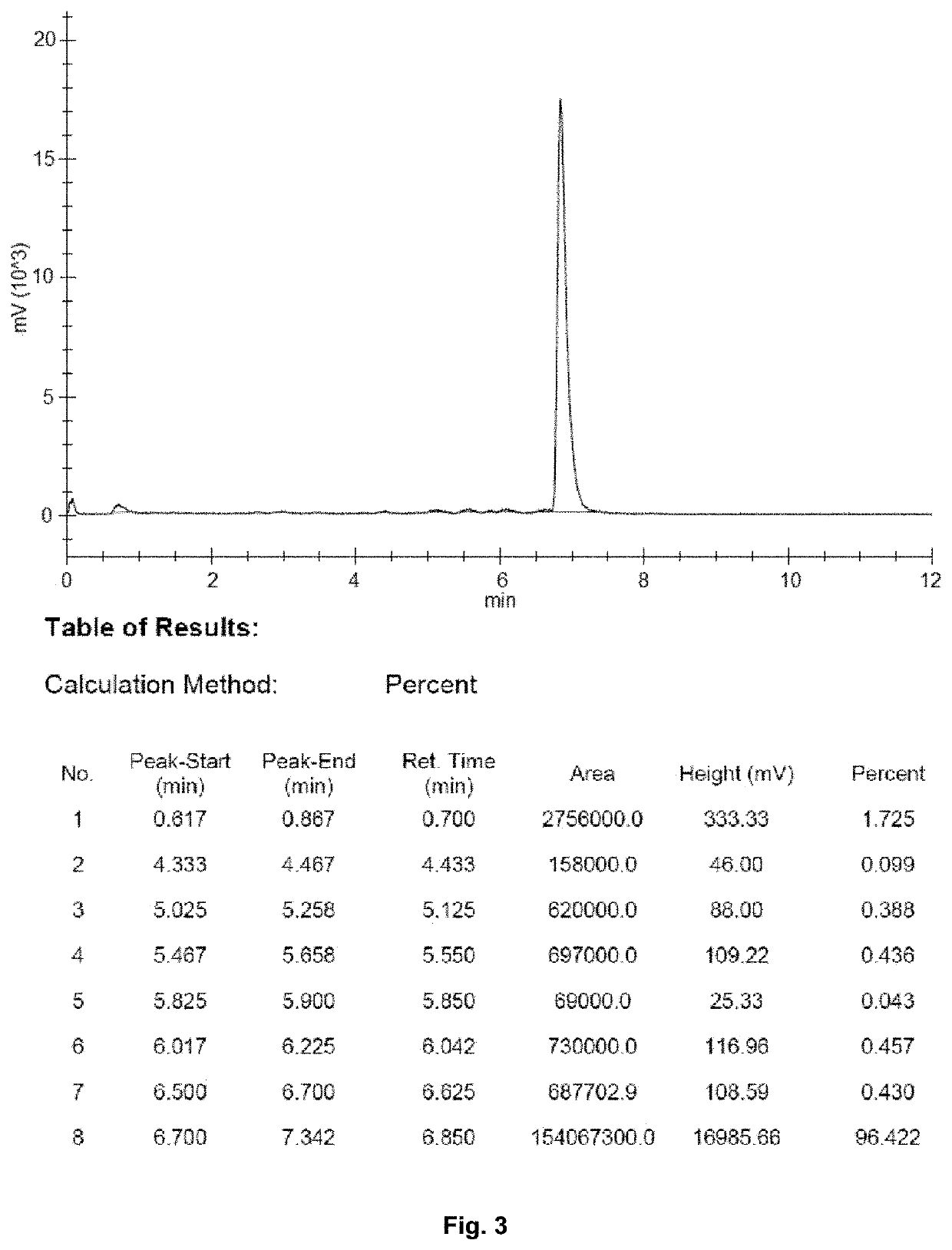68Ge/68Ga generator
a generator and gallium 68 technology, applied in the field of 68ge/68ga generators, can solve the problems of germanium prone to partly diffused diffusion, radiolytically unstable organic adsorbents applied in radionuclide generator systems,
- Summary
- Abstract
- Description
- Claims
- Application Information
AI Technical Summary
Benefits of technology
Problems solved by technology
Method used
Image
Examples
example 1
S UP TO 1000 MBQ (27 MCI)68GE
[0045]The following synthesis method is described by way of example for the manufacture of tantalum pentoxide as the most preferred metal oxide in accordance with the present invention. However, those having average skill in the art will understand that the present synthesis method easily can be applied to the manufacture of the other preferred embodiments of the present invention, namely vanadium pentoxide and niobium pentoxide, particularly due to their close chemical properties.
Synthesis of Ta2O5
[0046]A synthesis method for the Ta2O5 adsorbent was developed by the applicant using two primary synthesis routes: hydrolysis route using tantalum pentachloride (TaCl5) as a starting material and annealing route using tantalum powder (Ta powder) as a starting material.
[0047]Hydrolysis of TaCl5 was performed in water using controlled water / TaCl5 ratio. Temperature of water during the hydrolysis process was adjusted and kept stable in order to ...
example 2
S GREATER THAN 1850 MBQ (50 MCI)68GE
[0069]Generator column was filled with known amount of the adsorbent (8-9 g). The column was loaded with known amount of 68Ge (4000 MBq) and no stable Ge was added (total amount of Ge was calculated by specific activity of Ge-68 to 44 μg). The 68Ge / 68Ga generator was subjected to an elution program and the critical parameters were followed. At the current stage of the elution program the following values related to the critical parameters are shown in FIGS. 6, 7, and 8:
[0070]In particular, FIG. 6 shows a diagram in which values of elution yield in % are plotted against the elution volume in ml, showing 68Ga elution yields of greater than 70% (3000 MBq).
[0071]FIG. 7 shows that the breakthrough values for 68Ge are less than 10−7%.
[0072]Finally, FIG. 8 represents an elution profile of 68Ga of a 68Ge / 68Ga generator applied with the Ta2O5 adsorbent. The initial 68 Ge activity of the generator was 4000 MBq.
[0073]The Generator showed 68Ga yields >3000 MB...
PUM
| Property | Measurement | Unit |
|---|---|---|
| size | aaaaa | aaaaa |
| particle size distribution | aaaaa | aaaaa |
| particle size distribution | aaaaa | aaaaa |
Abstract
Description
Claims
Application Information
 Login to View More
Login to View More - R&D
- Intellectual Property
- Life Sciences
- Materials
- Tech Scout
- Unparalleled Data Quality
- Higher Quality Content
- 60% Fewer Hallucinations
Browse by: Latest US Patents, China's latest patents, Technical Efficacy Thesaurus, Application Domain, Technology Topic, Popular Technical Reports.
© 2025 PatSnap. All rights reserved.Legal|Privacy policy|Modern Slavery Act Transparency Statement|Sitemap|About US| Contact US: help@patsnap.com



